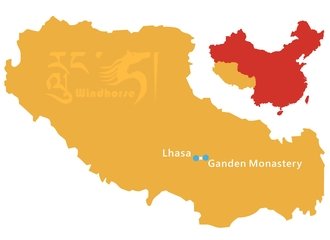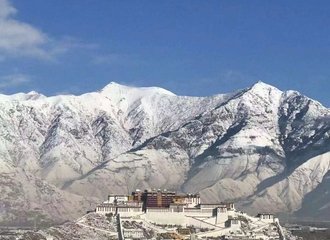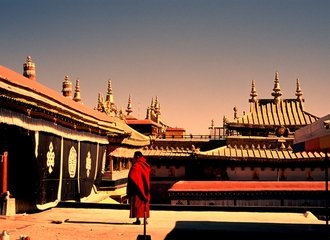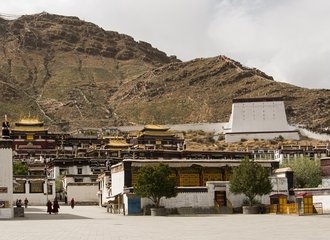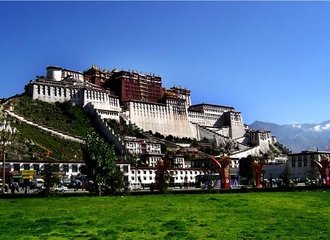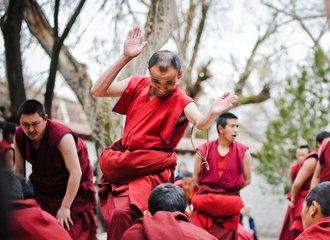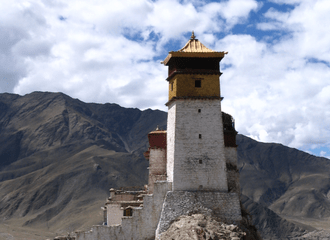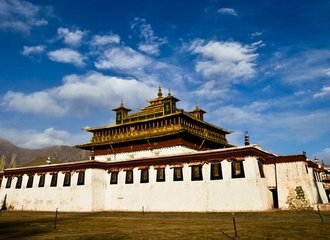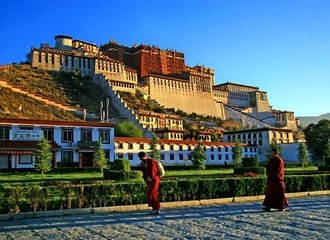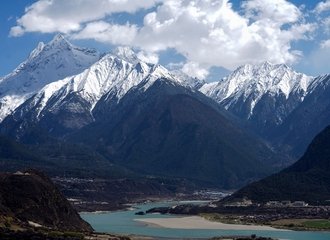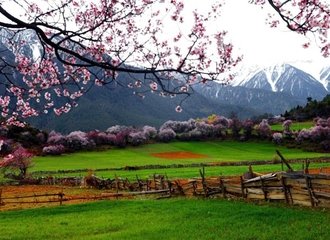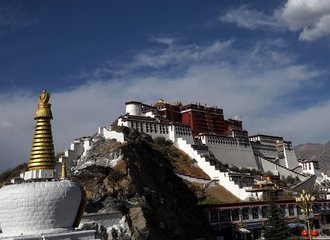Photography in Tibet - Useful tips
What could be more exciting than using a camera to capture and freeze the most beautiful moment in Tibet? No experience is better than photographing in Tibet. Use the camera in your hand to record every single unforgettable moment and enjoy the beautiful scenery from different angles through the viewfinder. You may appreciate more charms of Tibet than others who are with a brief visit.
Contrary to what many people believe that only professional photographers can take excellent photographs. Photographing in Tibet, you don’t need to be as professional as the photographers, even a careless and casual shot will get a fancy picture. Indeed, Tibet is such a place full of charming and breathtaking views, making you unwilling to turn off your camera.

What to photography
Situated on the roof of the world - Qinghai-Tibet plateau, with an average altitude of over 4,000 meters above sea level, Tibet shows its tourists a magnificent and stunning plateau scenery with several dozens of the world's tallest snow-capped mountains, beautiful glaciers, turquoise lakes, endless streams/rivers, deep gorges, vast alpine plains and valleys scattered with traditional Tibetan folk houses, and boundless grasslands dotted with yaks, sheep, nomads camps, etc.
As one of the world's most remote and untouched corners and reputed as ‘the 3rd pole of the world’, almost everything there still perfectly remains its original look, the landscapes there are also unspoiled and astonishing and the local Tibetans follow their age-old traditional lifestyle in many aspects. It is a spiritual, historical and cultural place with atmospheric Buddhist monasteries constructed with unique structures, colorful prayer flags embellished the mountains, massive historical sites, and isolated cliffside retreats.
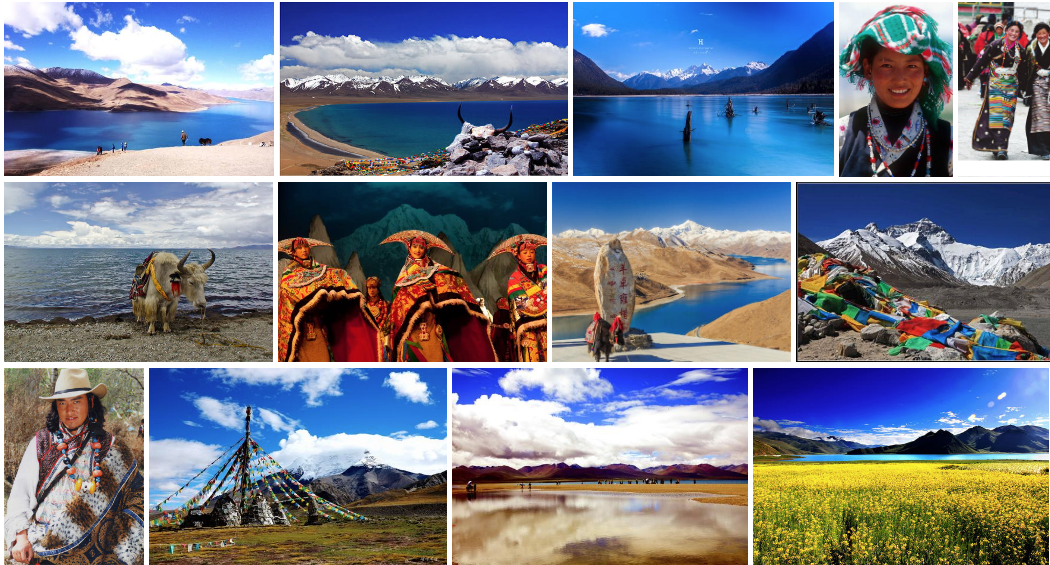

When to photography
The natural landscapes, humanities and customs, and religious culture of Tibet attract hundreds of thousands of professional and non-professional photographers from all over the world every year. Regardless of the equipment, you can take breathtaking images in Tibet. In the past, it murdered countless films, and today it fills innumerable memory cards. Then when is the best time to shoot in Tibet?
Generally, you can take a good photo in Tibet all year around. However, if you are a nature lover, the best time to shoot the spectacular views in Tibet should be from April to June and mid-September to early-November, as it has adorable and stable weather, the rainfall is not much, but there are lots of sunny days with clear blue skies and puffy white clouds, offering very high visibility which is ideal for shooting, especially when shooting the true faces of the snow-capped towering mountain peaks like Mount Everest and Mount Kailash.
July to mid-September is also good to shoot and travel to Tibet as the landscape there is in its best shape and it looks so vibrant, every corner dresses in green, wildflowers blossom everywhere, yaks, sheep and wild animals graze casually on the rolling hills and grasslands, but it is the monsoon season with the largest precipitation and lower visibility.
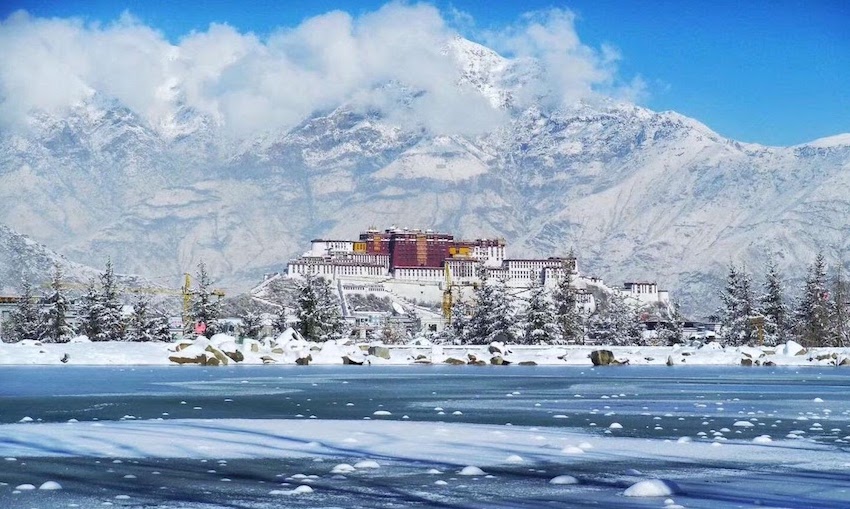
Winter seems to be cold but is actually another pleasant time for shooting in many areas of Tibet, it is not as cold as that you may imagine, which is even warmer than other places in China, as winter has the sunniest days making the daytime warm and the visibility highest in winter. Besides, it has the minimum number of tourists of the year and the cheapest tour cost, so it may be another good time to photograph in Tibet.
If you are a fan of Tibetan culture, no time is better than joining one of the Tibetan festivals to experience their unique Buddhist culture and folk customs. Tibetans dressed traditionally will gather together to celebrate these grand events, and many distinctive activities will be held during these festivals. The top festivals including Tibetan New Year (January 1st to 15th of Tibetan lunar calendar, the celebration and activities usually last for 15 days), Saga Dawa Festival (the 15th day of April of Tibetan lunar calendar), Shoton Festival (the 30th day of June of Tibetan lunar calendar), Nagqu Horse Racing Festival (August 10th of the Gregorian calendar).

Landscape Photography
Tibet is a place that can satisfy all your expectations for shooting, offering various landscapes from Swiss alpine scenery in its east to mountain peak landscapes in its west, from boundless grasslands with wildlife in its north to river valleys with farmlands in its south, and alpine lakes scattered everywhere. Below is the list of top natural wonders in Tibet that we picked for your reference.
- Yamdrok Lake: One of the 3 holy lakes, a breathtaking inland lake with turquoise-blue waters lying on the Southern Sino-Nepal Friendship Highway and surrounded by snow-capped mountains and alpine grasslands. Khamba-la pass observatory is the best spot to shoot Yamdrok Tso Lake.
- Namtso Lake: Another one of the three holy lakes worshiped by Tibetans, famous for its crystal clear blue water, breathtaking scenery and a wide variety of wild animals. The best time to take photos of Namtso is at its sunrise and sunset.
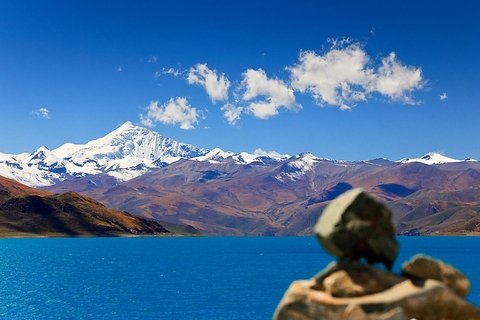
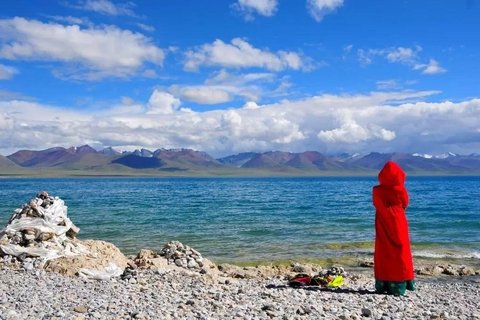
- Mt. Kailash and Lake Manasarovar: Honored as the holiest sites among Buddhism, Hinduism, Bon, and Jainism, they are two of the most remote and legendary travel destinations in the world located in far western Tibet. The best season to shoot both highlights considered to be the spring and autumn. And the sunrise and sunset are the perfect moments to press your shutter button for a shoot. The best spots to shoot Mt. Kailash would be Lhachu valley which is 8KM away from Darchen and the trail of Mt. Kailash Kora. The hillside next to Chiu monastery is the best place to take a photo of Lake Manasarovar.
- Mt. Everest Region: Reputed as the world highest mountain peak at an elevation of 8,848 meters, Mt. Everest offers magnificent and gorgeous views, making it a must-see attraction when making a tour in Tibet. Late April to early June and mid-September to November are the best months to photograph the peak of Mt. Everest and the sunrise and sunset are the ideal time to take photos of the magnificent Mt. Everest peak, and the best spots to shoot Mt. Everest peak is Mt Everest observatory in Tingri, Zhegula Mountain Pass, a small hilltop near Rongbuk Monastery, and Mt Everest Base Camp.
- Lulang Forest: A typical plateau mountain meadow featuring picturesque alpine scenery at the altitude of 3,700m. It is one of the must-see attractions in Nyingchi composed of lush bushes, dense spruce, and pine trees on both sides and a uniform meadow with thousands of wildflowers in the middle. The best seasons to travel and shoot here are from April to October.
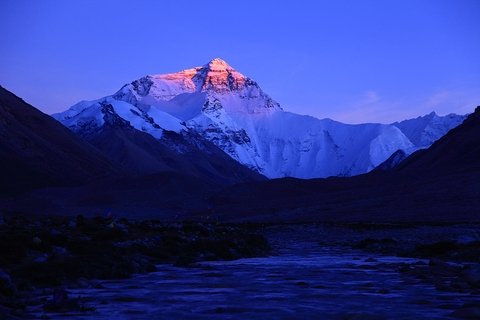
- Midui Glacier: Honored as the 1st of the 6 most beautiful glaciers in China by Chinese National Geography Magazine, it is a typical oceanic glacier located at Yupu village. The glaciers, lakes, farmland, villages, and forests blend to form a colorful world here, which demonstrates that it is a paradise where people and nature live in harmony. The best season to travel and photograph here is autumn.
- Mt. Namche Barwa: Rewarded as the most beautiful snow mountain in China by Chinese National Geography. The main peak of Namche Barwa is 7,782 meters high and famed as 'the father of icebergs'. The Mt. Gyala Peri with an altitude of 7,294 meters sits in its opposite direction and the famous Yarlung Zangbo River runs between them, forming the world's largest canyon - Yarlung Zangbo Grand Canyon, which offers several ideal spots to take pictures of Namche Barwa peak, another ideal spot is Serkhym-la mountain pass. The best month to shoot Mt. Namche Barwa is October and November. The peach blossom in spring is another good time to shoot at Mt. Namche Barwa.
- Lake Basum Tso: A beautiful place featured by unique scenery combined with snow-capped mountains, lakes, forests, waterfalls, pastures, cultural relics, and ancient temples. The best season to shoot this lake is in autumn and perfectly reflects surrounding snow-capped mountains and colorful leaves of the trees. The best spots to shoot this beautiful lake are the island observation deck in the lake, Jieba village observation deck, and the plank road around the island in the lake.
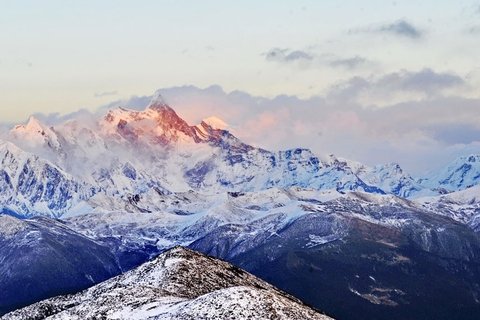
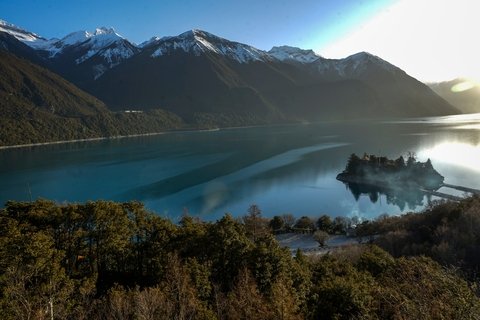

Architectures Photography
In terms of design, Tibet architectures pay great attention to the combination of its function and artistry. It can perfectly use the composition and pattern rules of unity, balance, color, contrast, light and shade, rhythm, proportion, scale, etc., to carefully design exquisite facade modeling. At the same time, it continuously absorbs the architectural art features and techniques of the Han and other ethnic groups, gradually forming an architectural group with Tibetan architectural characteristics and styles, making it achieve extremely high artistic achievements and very ornamental. Here are some of the distinctive Tibetan Architectures for your information:
- Potala Palace: The most iconic architecture and the landmark of Tibet. Once was the winter palace of the Dalai Lamas and now it’s a museum. In order to protect the relics in Potala Palace, tourists are allowed to spend 1 hour inside the palace during the peak season from May to October, and about 2 hours from November to the next April.
- Jokhang Temple: Situated in the heart of old Lhasa city and regarded as the spiritual center of Tibet, it is another sight that you shouldn’t miss in Lhasa as it is considered to be one of the best places to experience Tibetan Buddhism. It usually takes about 1 hour to visit here.
- Sera Monastery: Famous for its unique monks debating that takes place between 3 pm and 5 pm at its inner courtyard, it is another not-missing monastery in Tibet. Tourists usually take about 1.5 hours to visit here.
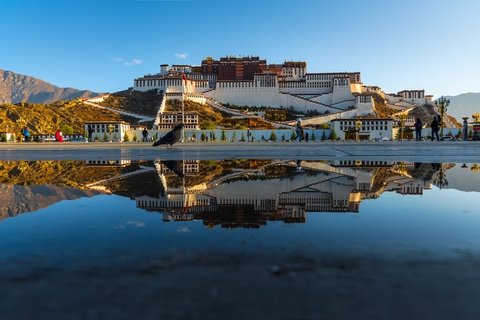
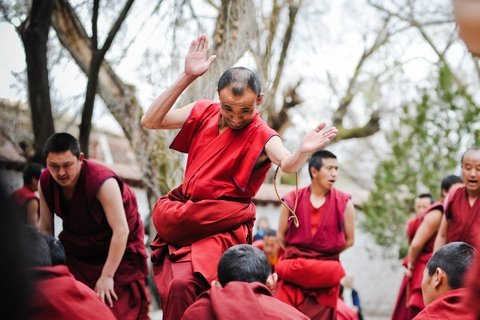
- Drepung Monastery: Situated at the foot of Mountain Gambo Utse, about 8 km. (4.97 mi.) west of Lhasa. Drepung Monastery holds an important position in Tibetan Buddhism history and once was the largest and most powerful monastery in Tibet. The best time to visit this monastery is in the morning as many chapels close at 2 pm. Recommend to spend about 2 hours there for sightseeing.
- Ganden Monastery: As one of “the great six” Gelugpa monasteries in China, Ganden Monastery is a great place for shooting with its picturesque views of the surrounding Kyichu valley and distinctive traditional Tibetan style architecture. It is suggested to spend about 1-3 hours there for sightseeing.
- Yumbulagang Palace: Honored as the first palace in Tibet and located in Tsedang, the cradle of Tibet civilization, Yumbulagang Palace plays an important role in Tibet history. Normally, we recommend our clients spend about 1 hour visiting this palace.
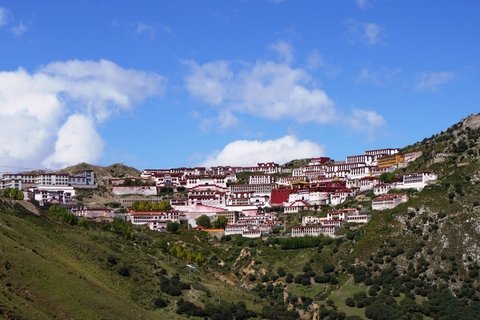
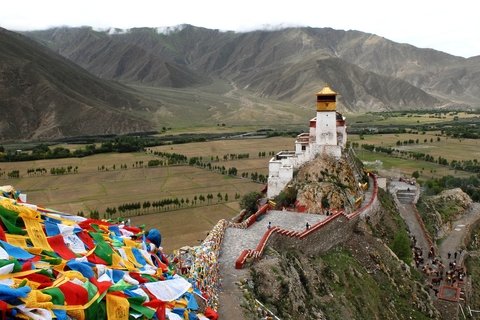
- Samye Monastery: Reputed as the first Buddhist monastery in Tibet. It has a unique structure combining Tibetan, Han and Indian architectural styles altogether. It is a place definitely worth a visit when you travel to Tsedang, Shannan. Sightseeing time is about 1.5 hours.
- Pelkor Chode Monastery: With a fusion of Han, Tibetan, and Nepali architecture, it is a unique Tibetan Buddhist monastery architecture combined with pagodas and temples, here you can see chapels in the pagodas and pagodas in the temples. Recommend to spend 1-1.5 hours for sightseeing.
- Tashilhunpo Monastery: It is the seat of successive Panchen Lamas, the second most important spiritual leader of Tibet, housing the stupas of the successive Panchen Lamas and many precious cultural relics of Song, Yuan, Ming, and Qing dynasties. About 2 hours to visit this monastery. The beautiful kora that circles the monastery offers fascinating views of Shigatse and the surrounding countryside, visitors need another 2-3 hours to trek along this Kora.
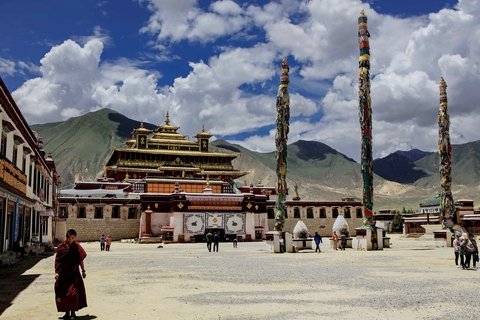


Festivals Photography
Tibetans generally believe in Tibetan Buddhism, many traditional festivals are related to religious activities. Tibetan festivals are rich and colorful, festivals are celebrated by locals almost every month, in some months, it even has several festivals, and folk festivals and religious festivals are interspersed with each other. Among the traditional Tibetan festivals, we have collected the most important and interesting festivals below for you to review:
- Tibetan New Year (Losar): The most important traditional festival for Tibetans. It starts from Dec, 29th on the Tibetan calendar. The entire celebration lasts for 15 days, however, most of the festival activities take place in the first 3 days. During this festival, Tibetan opera will be performed, the streets will be crowded with local Tibetans in their finest dresses, new prayer flags are hung, and families gather for lunch, drinking, singing, and dancing. It is one of the best times to experience Tibetan culture and folk customs.
- Saga Dawa Festival: It is one of the most significant festivals in Tibet celebrated on April 15th of the Tibetan calendar. Many religious activities will be held on this day and huge numbers of pilgrims circumambulate around the Lhasa Lingkhor circuit and visit Mt. Kailash where the Tarboche prayer pole is raised every year.
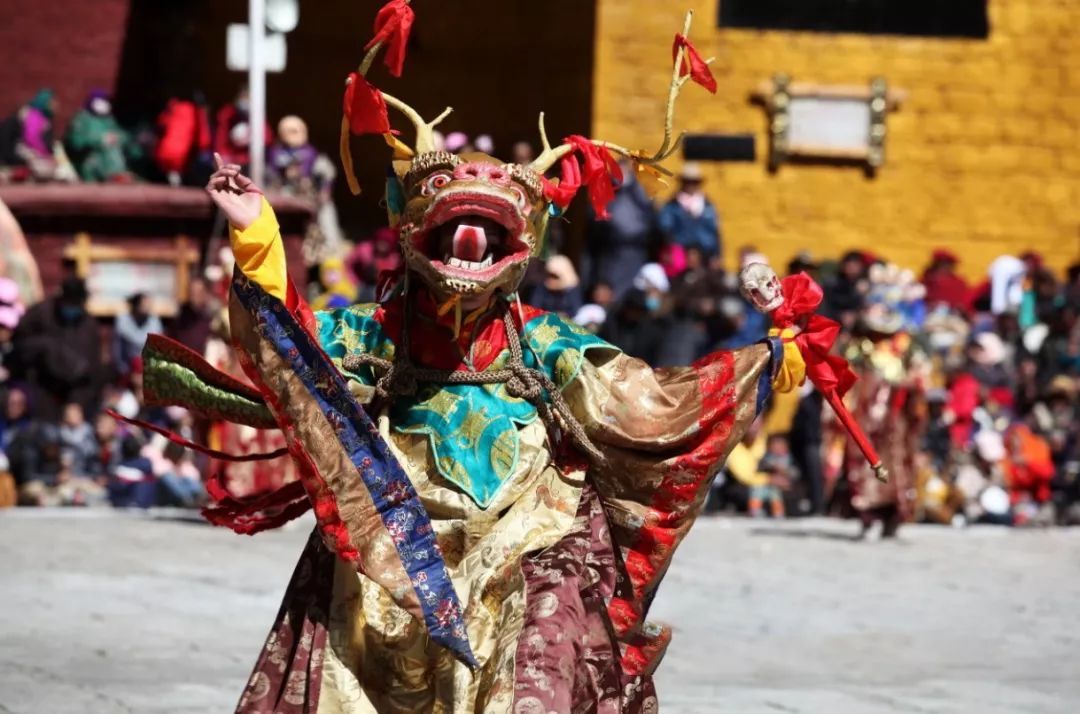
- Nagqu Horse Racing Festival: The grandest annual event held every early August in northern China's Nagqu Prefecture when the pastures are in its golden shape. It usually starts on August 10th and lasts for 5 to 15 days involving activities such as horse races, yak races, tugs of war, the staging of Tibetan operas and trade fairs, etc.
- Shoton Festival: Also called Yogurt Festival, considered to be a showcase to rooted tradition, appealing Tibetan culture, and the great piety of the Tibetan people. It is the largest festival for Tibetans held on the 30th day of June in the Tibetan lunar calendar. A huge Thangka will be unveiled at Drepung Monastery, traditional Tibetan opera will be performed at Norbulingka Palace where local Tibetans gather to enjoy the opera and have picnics.

Pilgrimage Photography
For tourists, it’s quite worthwhile to follow the Tibet pilgrims to circumambulate the koras. Indisputably, Lhasa, especially the ancient Barkhor Streets around Jokhang Temple, would be the best place to find and photograph pilgrims. Jokhang Temple is the spiritual center of Tibet with the most famous Lhasa’s pilgrimage circuits - Barkhor tracing its outskirts. This kora is probably the best introduction to the daily life of local Tibetans and Lhasa old town for newcomers.
Except for the kora along Barkhor streets, there are some other koras in Tibet like Nangkhor encircling the inner precincts of the Jokhang, the Lingkhor traditionally encompassing the entirety of the old city, the popular kora encircling the Potala, and other excellent koras circling Drepung, Sera and Ganden Monasteries. The best time to photograph the pilgrims would be the mornings. Another popular and adventurous pilgrimage kora to follow would be the Mt. Kailash Kora and Lake Manasarovar, every June to September, especially Saga Dawa Festival, apart from the local Tibetans, here you can see dozens of Hindus on the Kora.
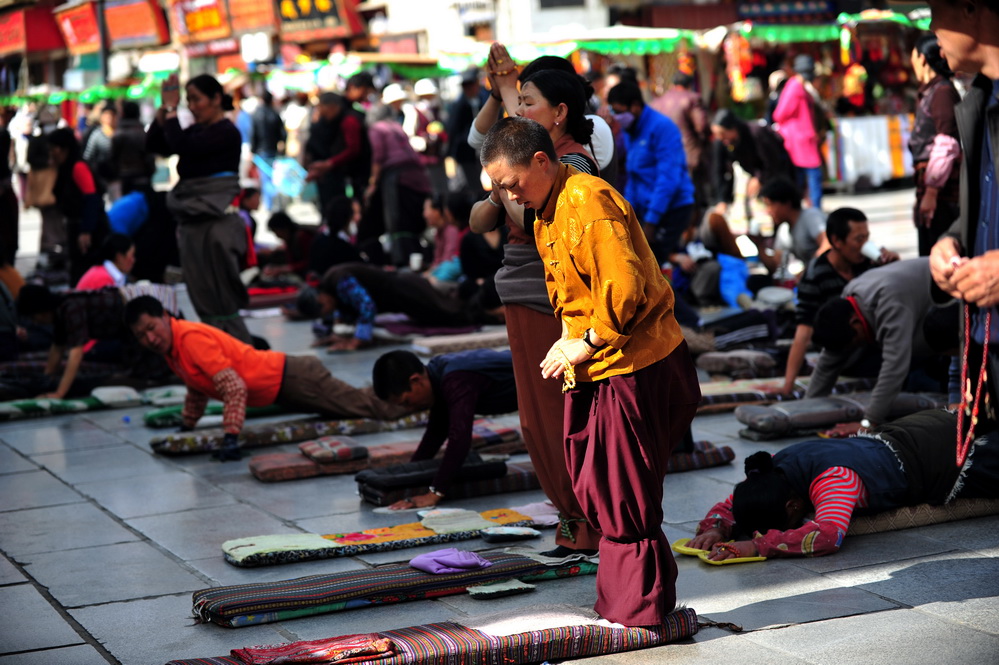

Wildlife Photography
In the west of the Tibetan Plateau, the Changtang Nature Reserve lies there, which is one of the last great wild landscapes in the world. This largely uninhabited, but ruggedly beautiful area is covered in snow-capped peaks, beautiful valleys, vast grasslands/wetlands, and habits plenty of wildlife including chiru, snow leopards, Tibetan wild ass (kiang), along with Tibetan brown bears, blue sheep, Tibetan sand foxes, black-necked cranes, and wild yaks! Besides the wildlife, here also harbors a unique but rapidly disappearing nomadic culture, which is as important as Tibet ’s religious traditions. Summer is the best season to shoot in this region.
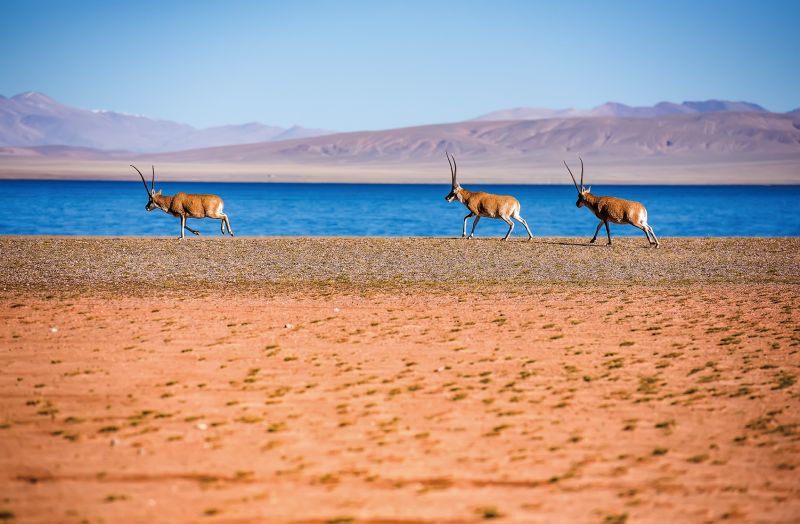

Other Tips for Photography in Tibet
- Equipment: As people may feel weak at high altitudes, it is not encouraged to take too much photographic equipment. We have seen many great pictures even shot by smartphones.
- Bring sufficient films and memory cards since it is really a difficult task to buy these stuff in many remote areas of Tibet. Extra batteries are advised, as battery life shortens considerably in low temperatures. Lithium batteries are a good choice.
- Avoid your camera overexposure to the sun. A UV lens will be very useful to protect your camera from the strong ultraviolet radiation. Keep your photographic apparatus away from the unclean environment especially in the dusty and windy weather.
- Please respect the local Tibetan customs. In some areas, people believe that it is inauspicious to have their photo taken, so ask first for permission of the people you want to photograph. Giving presents sometimes works well to show your friendliness.
- In some monasteries, it is offensive to take photos, especially photos of statues in the shrine. Sometimes, a certain amount of money should be paid. The amount depends on the popularity of the monastery. Do not take photos secretly in these places. It may bring about unexpected troubles and even be against local regulations. Finally, remember not to take photos in sensitive military areas.
- In some areas, it is very inconvenient to recharge a video camera since there is no power in the villages. Talk to the manager of a restaurant, and perhaps he will help you. Some restaurants generate electric power with their own generators.
We are more than happy to assist you to plan your photography trip to Tibet. Find your interested tours at our Tibet tour page. If the pre-designed itineraries don’t perfectly match your desires, please feel free to share your comments with us directly!


